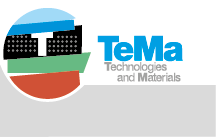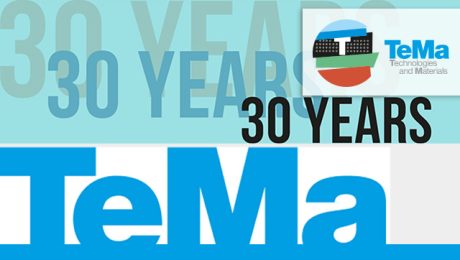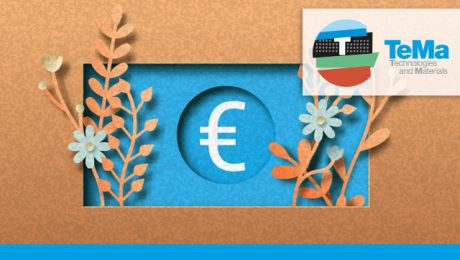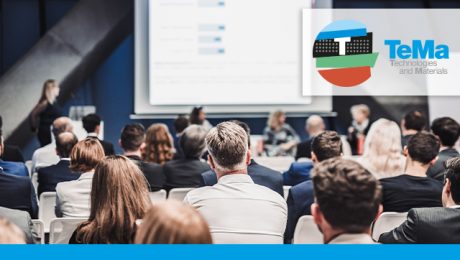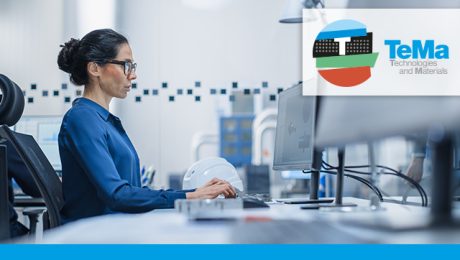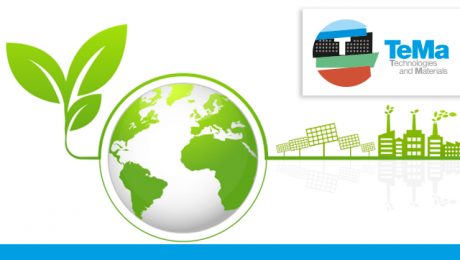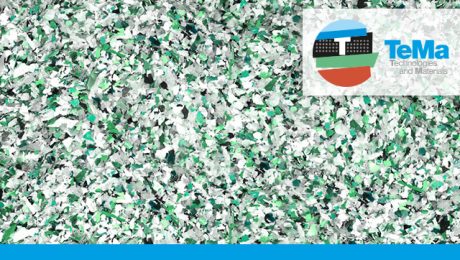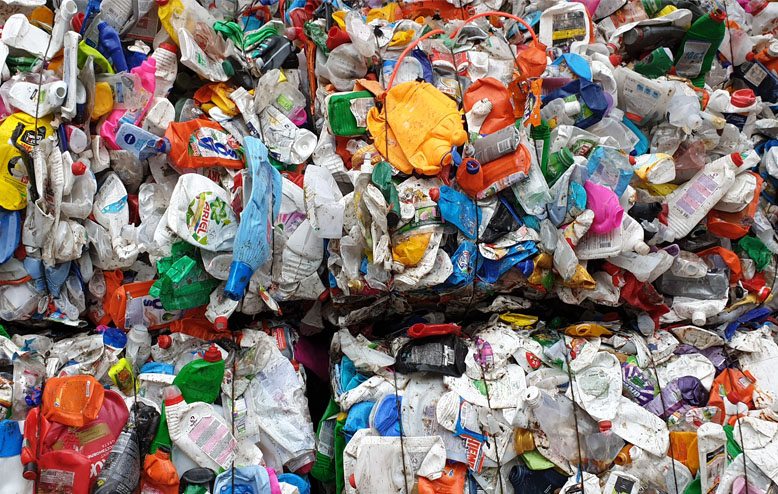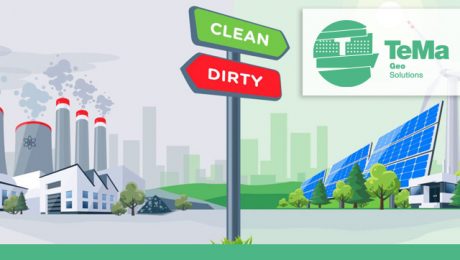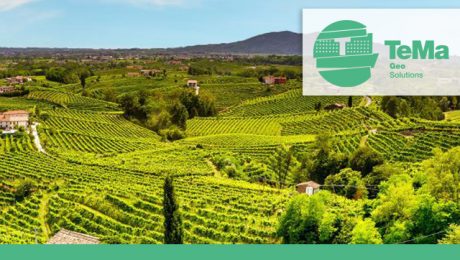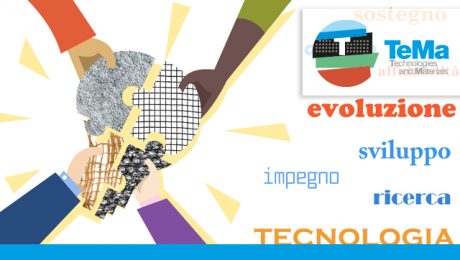TeMa, laser focus on the future for 30 (+1) years
TeMa Technologies and Materials has just celebrated thirty years in business. A spin-off of Tegola Canadese, it was actually established in 1993 with the aim of expanding its presence into the commercial, civil and geotechnical construction space. Focused on products and systems to protect building foundations from rainwater and groundwater, the company went on to gain impressive international experience, becoming a go-to provider for the making safe of landfills, handling of contaminated sites, and soil reinforcement systems with solutions designed to be increasingly resilient, even in the face of extreme weather events.
TeMa is headquartered in Italy and is present on four continents with facilities in Italy, the US, South Africa, Spain, Turkey, India, Romania and Russia. Our sales are projected to reach the 100 million euros mark, demonstrating significant growth, doubling our 2021 revenues. A 100% increase within the space of just four years.
Rapidity, speed and reliability are the cornerstones of our relationship with the market, qualities that are paired with innovation, development of human resources and a strong environmental commitment. This sense of environmental responsibility is linked to the fact that our main manufacturing facility is located in an industrial area in Vittorio Veneto set between the unspoilt forests of the Cansiglio plateau and the hills recognized as a UNESCO World Heritage site. A heartfelt respect for the region that we’ve proudly professed from day one of our industrial journey.
This is why, for TeMa, sustainability is about much more than just green claims: we recover quality plastics through two recycling plants for the reuse of polypropylene and high-density polyethylene, one in Russia and one in Romania. All waste materials are sorted and put through grinding, washing and filtering cycles, before being extruded and used to make new products.
Over our 30 (+1) years in business, TeMa has risen to the sustainability challenge with a growing awareness of the importance of this issue, coming up with environmentally friendly solutions for geotechnical applications. One notable example is our range of products for the construction of “reinforced soil retaining walls”, in addition to our specialist area: the development of innovative and effective materials for use in embankments, road ditches, hillside terracing, landfills and contaminated sites. TeMa earth-retaining systems use the actual soil in place of traditional reinforced concrete products, encouraging vegetation growth and being undeniably better for the landscape. Our solutions include geonets, geomembranes and metal structures featuring different angles, designed to support the soil on their own and control rainwater. Many applications include the use of pre-seeded biodegradable matting.
With TeMa products, processes can now be employed that enable a considerable saving in terms of the CO2 emissions involved in handling materials. The resulting reduction in environmental impact is amazing! By doing away with the need for gravel and instead using the soil excavated on site, the energy used to transport materials is kept to a minimum. This approach means structures can be built to be impact resistant, withstanding even violent weather events, which there has certainly been no shortage of in recent years.
TeMa stands as a bastion of modernity in the industry, forever trying out competitive technologies — in our laboratories — in order to come up with simple and efficient materials, products and systems. These solutions are underpinned by research, experimentation and testing: a team of professionals — men and women, engineers and technicians — who all bring their individual area of expertise to the table and are driven by a commitment to customer outcomes, offering support, assistance and an attentive ear.
While ESG (Environmental, Social, Governance) factors are only now becoming mainstream among many businesses, these issues have always been at the very core of TeMa’s corporate philosophy. TeMa products have helped save thousands of loads of aggregate from being quarried and transported over the last thirty-plus years, which has had an extremely positive impact on the environment.
- Published in CORPORATION, Research and development, TeMa Technologies and Materials
Why TeMa?
TeMa Technologies and Materials is a brand operating in 80 countries worldwide with a business network and specialised distributors. An extensive sales network, regional agencies and a technical sales department are supported by an efficient customer service and functional logistics. But the most distinctive characteristic of TeMa, recognised internationally, is its strong drive for innovation.
A permanent feature is the innovative aspect of its products, solutions and processes, as well as its participatory research, reflected in organised meetings, technical seminars and international partnerships.
A solid technical sales organisation
We see the 30-year milestone that we have just celebrated with our collaborators as a start-up towards the future. With our training and experience in technical and sales areas, and the support of our distributor network, we can further enhance our ability to offer tailor-made solutions to all customers.
Indeed, our strong ties with the international market and highly skilled professionals encourages our technicians to make continuous improvements. Our business model sets us apart, making the products and services we offer unrivalled.
We also greatly value the development of ideas that takes place by exchanging experiences during training courses for our in-house employees and advanced courses in skills and competences for our external collaborators. This highly customer-centred business model aims to meet their needs while guiding decisions with solutions adapted to each situation.
TeMa constantly pursues certified quality
In our R&D department, we design and test new solutions and technologies to provide our customers with innovative products. Along with experimentation, this has enabled us to achieve several international patents.
We carry out daily tests regarding durability, compressive strength and drainage capacity in the most critical cases to ensure that our products deliver the expected properties. Each product placed on the market must comply with the stringent quality standards stipulated.
It is in this relentless verification of excellence that TeMa has implemented a UNI EN ISO 9001-certified quality system, documenting top performance across the whole production process. In compliance with the CPD (Construction Product Directive) 89/106/EEC, the product ranges TeMa offers have followed the procedure to be awarded the CE mark.
We monitor and optimise all aspects of the work and provide various services:
- Testing on raw materials.
- Inspection of finished products and prototypes for quality and performance.
- Compilation and updating of product Safety Data sheets.
- Quality control.
- Production process supervision and control.
- Sample testing of production lots and compliance checks.
Consultancy and technical support.
Our in-house technical department is on hand to assist customers, from choosing the solution through to its implementation, for any type of application.
Our technicians provide support for the sales network and assist customers in choosing the most appropriate products to solve each specific technical problem and meet specification requirements. This is achieved by analysing all relevant variables and providing complete and comprehensive technical specifications and installation methods.
Any upcoming projects? Contact us! We can help you choose the most effective solution.
- Published in CORPORATION, Research and development
Sustainable finance: sustainable development
It’s interesting to realize just how much the environmental culture of a business can be a way to accelerate its development, even by allowing it to access finance that’s vital for its growth and innovation: this is where the concept of sustainable finance comes in.
No self-respecting company report is complete without covering sustainability, the circular economy, wellbeing and the environment, which have different connotations for different businesses and are promoted to varying extents over the course of their lives.
The fact that this has become a “mature” issue can be seen in the need and, indeed, the will of companies to meet the requirements of ESG “certification” (Environmental, Social and Governance), since those companies who are attuned to these worlds are destined to have a more productive future and be more attractive to financial backers.
So, by sustainable finance we mean finance that supports the capital and investments of businesses with future-proof projects, especially from an environmental point of view. This is a practice aimed at investing to develop production processes, in addition to funding research into raw materials and end-of-life disposal of products, with the upstream decision process generally focusing on protecting the planet.
The cornerstones of sustainable finance
There are three factors taken into consideration, into which the tangible application of sustainable development can be narrowed down.
- Environmental factors: these include issues like the need to promote greener, more energy-efficient production processes. They very much hinge on the themes of circular economy and zero-emission activities, as well as on preventing pollution and protecting biodiversity.
- Social factors: these focus more on reducing inequality and on developing an inclusive system, one that is pro-human rights, in addition to investing in training and in the wellbeing of communities.
- Governance factors: these ensure that both environmental and social factors are included in the company‘s decision-making processes.
TeMa and sustainability
TeMa Technologies and Materials has long been a believer in using sustainable materials and creating sustainable solutions, even in the building and geotechnical fields.
Reinforced soil projects, on both a small and large scale, are a case in point: the technique of using soil as a retaining material, instead of concrete, certainly makes the structure more environmentally friendly, providing benefits in terms of both the landscape and liveability (they often double as noise barriers, click here for more information).
We provide 30-plus years of experience in the development of geogrids and geomembranes supplied in rolls, which are easy to carry to even the most inaccessible sites, and are ideally suited to the construction of landfills, tunnels, roads, reinforced soil projects and drainage ditches.
In addition to the many advantages in terms of construction, they come with the no small benefit of energy savings and the reduction in air pollution achieved when using geomembranes instead of traditional gravel: in terms of transport alone, the number of trips (trucks) drops from 100 to 1.
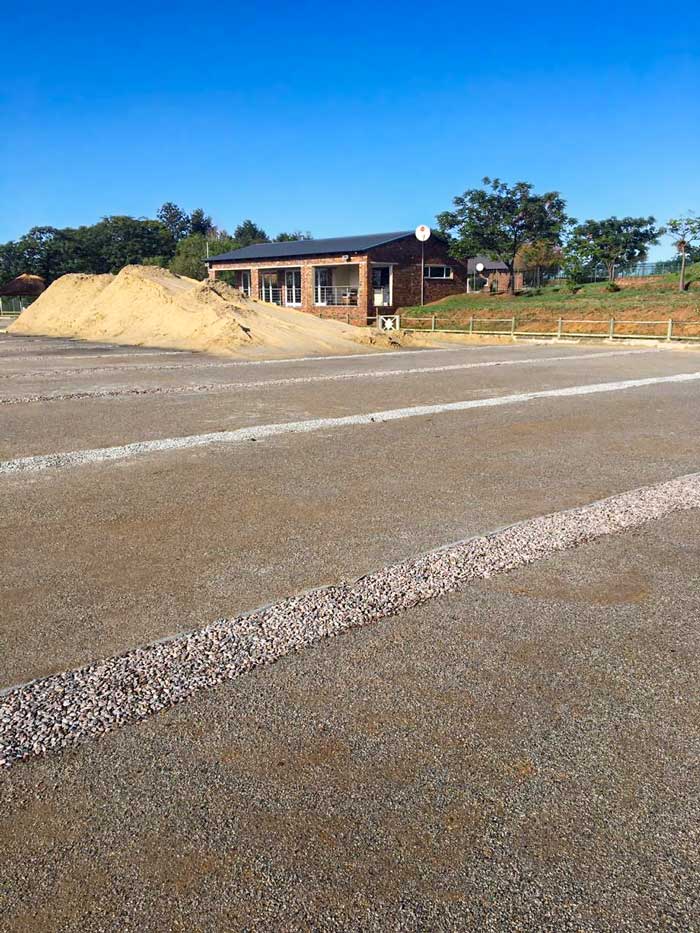
Out of our many past projects, one standout would have to be the track of a race course in Johannesburg, in South Africa.
In addition, TeMa supplies sustainable products like natural fibre matting — made from materials such as jute, straw, coconut and cellulose — that are particularly well suited to surface erosion control on grass slopes.
- Published in CORPORATION, Research and development, TeMa Technologies and Materials
Lifelong learning
The term lifelong learning refers to the process aimed at ensuring skill levels keep pace with new professional needs and market innovations as they emerge. In the field of residential, commercial and infrastructure construction, technologies and work processes are developing constantly and at a heady pace, driven by research and by the demands of designers.
Over our 30 years in the business, TeMa Technologies and Materials has interfaced with numerous entities, has broadened its product range and, above all, has researched and come up with solutions that cater to the technical, business and logistical requirements of a fast-evolving market. TeMa’s allure lies in our close relationship with designers and operators, being there to provide support and spearheading training and ongoing learning.
So, while competition is strong, here at TeMa we respond to the challenge with professional growth, specialization and refresher training. The new developments and the skills that put us in a position to tackle challenges, site after site, project after project, are all part of our end customer focused approach.
We’re all convinced that sound technical learning can make all the difference when it comes to the success of even the most ambitious projects, which is why we expect our in-house personnel to engage with this learning, and why we also offer training to all the people choosing our solutions each day.
We offer monthly webinars and in-person meetings during which we explore the issues to be dealt with in each specific field, along with legislative aspects and technical aspects, above all leveraging practical examples, because hands-on experience promotes learning.
The meetings, which are almost invariably accredited, last anything from a few hours to a whole day, allowing attendees to explore the subjects in depth, ask questions and seek clarification from our experts.
- Published in CORPORATION, Research and development, TeMa Technologies and Materials
Literally putting them to the test.
Ensuring that products fulfil the required functions and standards has been our mission since the outset of our company. All materials exposed to sunlight, moisture and temperature changes are exposed to the damaging effects of nature. There’s also erosion due to rain, which can play a major role in the deterioration of many building materials.
It’s therefore important to work with institutes that have weathering test equipment and expertise in testing services for the building materials industry, for residential and commercial construction.
Why it’s important to test solutions
Each company like ours aims to meet the expectations of those who choose it and, of course, to comply with all applicable regulations. Testing the solutions we provide allows us to guarantee performance also under critical conditions, offering our customers cutting-edge products, and to support designers in planning and installers during the installation stage. As for innovation, our customers’ expectations are always very high: indeed, dozens of new products are being tested and waiting to be introduced into the market.
The tag-line of the specialised divisions of TeMa is ‘Solution’ and, to be true to this requirement, a product must meet a series of specifications of on-site competitiveness, service effectiveness and a long life.
The tests involve special equipment for testing durability, compressive and tensile strength, drainage capacity and mechanical protection, ventilation and vapour diffusion performance, thermal and corrosion resistance… as well as many other functions viewable here.
This is all achieved as a result of the close connections between our Technical Department, where market demands are examined and possible solutions studied, and Labs, where tests are carried out to check performance and guarantee performance parameters. By working with accredited independent external labs for testing procedures, we can improve throughout all stages of the production process.
Our certifications
CE marking is featured on all product lines in our catalogue, in compliance with the CPD (Construction Product Directive) 89/106/CEE. The pursuit of excellence has led us to implement a certified quality system, UNI EN 3001:2000, which ensures performance levels throughout production. We also hold various international patents.
Activities at TeMa labs
- Raw material testing: we check the quality of raw materials.
- Support for R&D: our solutions are the result of continuous research into market requirements and constant improvements.
- Supervision and monitoring of production processes: we check that production processes comply with standards and the studies undertaken.
- Quality and performance testing of end products and prototypes: tests to check performance, initially of prototypes followed by end products.
- Spot tests on production batches and conformity checks: on end products and by testing application solutions.
- Quality control: we check that products meet the standards of individual countries and the required performance.
- Drafting and updating of product data sheets: each product has its own data sheet, promptly updated, with technical data indicating its performance.
- Certifications: those required for each country in which we operate and the environmental certifications to be guaranteed for our customers.
Find out more on the dedicated page of our website.
- Published in CORPORATION, Research and development, TeMa Technologies and Materials
Our approach to green energy
International Energy Saving Day is drawing near and we, being keen to respect the environment by integrating with it rather than forcing it, feel personally involved.
We are experiencing a period in which the issue of energy sources has escalated on a global scale, challenging the plans and forecasts of organisations.
Events have led to a pressing need to ensure that this particularly heartfelt situation, occurring in February 2022, is high on the agenda not only for governments but also for all businesses and families. So, we want to dedicate a few lines to it.
The ‘value’ of energy saving
Everyone knows that by ‘saving energy’ they can reduce energy consumption through all their actions and habits. By re-assessing their production and logistical processes and implementing appropriate technologies, businesses can strive to achieve minimum waste. In doing so, everyone can play their part to protect the planet, which is already somewhat damaged by the serious problems caused by climate change.
Small everyday gestures trigger cultural processes that lead to actions on a larger scale, as in the case of companies. Not out of obligation, but because it starts to be worthwhile… And it’s a real value.
How to pursue the value of sustainability
As previously mentioned, the first step must be taken by those who succeed in changing their habits and choices in order to contribute to this sustainable model, so that everyone can effectively influence decision-makers.
Nowadays, being sustainable means not wasting, not consuming energy unnecessarily by adopting methods and systems that enhance this commitment to sustainability.
Today, TeMa is acknowledged globally for having introduced, since starting out 30 years ago, geomats, geonets, geomembranes and ultra-technological products to retain and protect the soil, reinforcing it and restoring its retention power. Part of the materials used to make them comes from recycled plastic. This process takes place at two of the company’s own recovery plants in Europe. In the most vulnerable environmental situations, TeMa has now put in place biomats and bionets that help the revegetation of areas in the most natural way.
Needless to say, sustainability must be developed by using renewable energy sources that do not pollute the environment.
About 50% of the energy we use in our production processes comes from renewable sources: the IWIS Group, our partner, has three photovoltaic plants: 200 kWp, 150 kWp and 100 kWp.
It is also equipped with a co-generator that can produce an additional 800 kWp. This plant uses the heat naturally discharged by the plants to increase the efficiency of electricity production. The aim is to reduce the Carbon Footprintand CO2emissions.
TeMa Technologies and Materials was founded thirty years ago with a focus on sustainability and research. We will continue at this pace, always improving. After all, it’s our job to find solutions.
- Published in CORPORATION, Research and development, TeMa Technologies and Materials
TeMa Technologies and Materials’ sustainable choice
We started out almost 30 years ago and being environmentally responsible has always been part of our philosophy, partly due to the fact that our headquarters are located less than three kilometres from the core zone of the hills recognized as a UNESCO World Heritage Site, and just over 6 km from the edge of the Cansiglio forest.
So protecting the environment was always going to be one of our key commitments, not just in our manufacturing systems, but also in the innovations implemented in the solutions we offer our customers.
Reinforced soil and CO2 savings
Our engineers have redesigned the reinforced soil system, leveraging the very pressure of the soil retained by geogrids, so as to save millions of cubic metres of concrete and aggregate, which would otherwise have to be carried to the site in hundreds of truckloads. Now it takes just one: a considerable saving in terms of CO2 in line with the goal of reducing the carbon footprint, which is the total amount of greenhouse gas emissions generated by a product or a process.
Our geonets and geogrids are made partly from recycled plastic sourced from facilities that are controlled to ensure the resulting plastic meets our standards. A substantial difference in terms of both the collection of material to be recycled and conditioned, and the recycling procedure itself (the material in question is high-density polyethylene, and polypropylene, which comes from bottles, containers, capsules and so on), as well as its preparation, for which – in order to ensure quality – we have set up two plants: EcoTeMa in Russia and Replastica in Romania.
A sustainability journey that TeMa has embarked on and is committed to pursuing further, continuing to invest in technologies and systems with a view to achieving zero emissions by 2050.
Our recycling production process
Material sorting: only materials that meet preset standards in terms of quality and type make it to the next stage. The sorted material is first shredded and then washed, then shredded and washed again. Only then does it qualify as a “raw material” ready to be turned into granules and then extruded and used in TeMa production processes.
It is supplied to our facilities across the Group for them to make into products to be introduced into the market in line with the specifications laid out by designers and in compliance with the legal requirements in the individual countries.
Where does the washing water end up?
The water used for washing is also reused once suitably treated. The portion of water not used is disposed of in compliance with specific government standards on environmental impact.
Renewable energy
Along with plastic recycling and a focus on reducing the amount of carbon dioxide released into the atmosphere, the IWIS Group has installed 3 photovoltaic systems of its own – with rated outputs of 200 kWp, 150 kWp and 100 kWp – as well as a cogenerator, together producing 50% of the energy used in manufacturing.
If you wish to receive information about it, CONTACT US.
- Published in CORPORATION, Research and development, TeMa Technologies and Materials
Environmental intervention works in keeping with our philosophy
An environmental reappraisal
Over the centuries the relationship between man and the environment has undergone considerable tensions. Rural development and the impetus in building have undoubtedly disrupted certain landscapes, reducing natural spaces to accommodate new urban and agricultural areas. This type of intervention work has led to a crisis in the ecosystem, imposing re-evaluation of the fragile balance between the economy and the environment.
This is the socio-cultural background that has led to global re-assessment aimed at defining programmes and new territorial management formulas. It has been the driving force behind TeMa Geo Solutions, the TeMa business unit dedicated to environmental intervention works. These are aimed at protecting land and offering the opportunity to operate using eco-compatible solutions and products that integrate into the environment without compromising its appearance or safety.
Sustainable development according to TeMa
Nestled at the foot of the hills declared a UNESCO World Heritage Site, the TeMa headquarters could not help but consistently correspond to this desire for sustainability, widespread in this area for some years now. But how has it contributed? By using raw materials responsibly, with 100% natural solutions and intervention procedures with low environmental impact.
Natural products
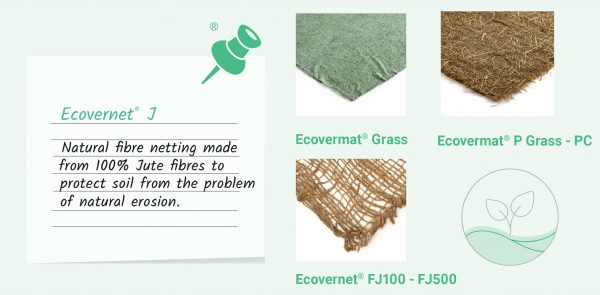
As a concrete example, TeMa addresses the problem of surface erosion of the soil by meteoric rain with Ecovernet® in natural fibres such as jute or Ecovermat® in natural fibres such as straw and coconut – or in biodegradable cellulose fibre. Installing products in this range allows intervention works to be carried out immediately, even in situations with difficult access for on-site vehicles. For such types of intervention works, total integration with the soil is achieved, guaranteeing lasting results over time.
Green intervention works
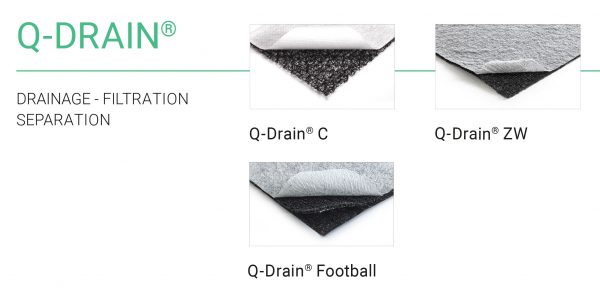
An interesting new development introduced by our technicians is the use of lightweight materials that feature reduced encumbrance, which not only affects the cost of the work but also speeds up the time required on-site. When building drainage systems, for example, TeMa does not rely on that range of inert materials from quarries that need to be extracted and transported. The company uses drainage geocomposites instead, such as Q-Drain, thus avoiding any waste of energy and CO₂ emissions into the air, thus ensuring quick installation.
These are just a few examples to show the potential that the field of environmental engineering has to offer:
- Reduction in costs while maintaining the effectiveness of intervention works
- Sustainability of the actions taken
- Protection and safeguarding of the soil
- Promotion of natural raw materials
To fully understand our philosophy, browse through the new catalogue dedicated to the protection of vineyards, which are the natural and cultural heritage of our lands and an identifying feature of our history. Inside it, you will find products and solutions for responsible and eco-compatible actions.
- Published in Drainage geocomposites and membranes, Erosion mats, GEO, Research and development
TeMa: a support for the ground
Geo Solutions is the TeMa division that has been developing technologies and products for protection, maintenance and drainage in the field of major environmental works for over twenty years.
A SPECIAL FOCUS ON THE TERRITORY
More specifically, due to the location of its first production unit – situated near the hills that are now a UNESCO World Heritage Site – TeMa has always kept an eye on agricultural lands and especially wine-producing landscapes, which are now gaining increasing attention because of their economic importance and their environmental value.
This new focus on the landscape, including the agricultural one, has never been as relevant as now. We have officially entered the green year and therefore, today, we want to show you some systems for preserving your wine crops.

THE MAIN RISKS: EROSION AND DRAINAGE
The main risks that undermine the stability of the soil include: the natural erosion of the topsoil with the resulting need to reinforce it and the problem of water drainage.
EROSION: CAUSES AND SOLUTIONS
Soil erosion is caused by rainwater runoff, which, by removing the top layer of the soil, can cause significant erosion in the long term.
Various applications are available that provide protection against soil erosion. TeMa proposes natural and synthetic solutions, depending on the circumstances: a 100% natural jute fibre bionet can be used, or a three-dimensional PP geomat, such as KMat. A system of geosynthetic reinforcements (woven geotextiles or geogrids), once embedded in the subsoil, recreates a tensional layer that absorbs any stress of greater intensity than the soil.
DRAINAGE: CONSEQUENCES AND SOLUTIONS
Finally, to solve the fundamental cause of soil instability, namely drainage, TeMa has developed drainage trenches capable of removing water that is naturally absorbed by the ground. These are trench excavations, usually rectangular in section, filled with natural inert material, such as gravel or broken stones from quarries, with a high degree of permeability. Removal takes place either through the trench filling material or through the drainage pipe located at the base of the trench. To avoid another possible problem, i.e. clogging of the pipe, it is entirely covered with layers of non-woven fabric.

WHY CHOOSE TeMa?
Its attention to details, to small things, sets one company apart from all others. This is why TeMa stands out in its sector, thanks to its drive towards innovation and its respect for the environment, whose landscapes are unchanged after intervention works by TeMa.
Find out more, explore the TeMa website.
- Published in GEO, Landfills, news, Research and development, Synthetic turf soccer fields - Accessories
Successful collaboration
In all three of its divisions, TeMa has an in-company technical department that supports and assists its customers in the various phases of implementing a project. We take care of all the details, from choosing the solution to using the method of installation.
At TeMa, our technicians use in-depth analysis and cutting-edge software to propose effective, complete and reliable solutions for any type of intervention in the field of geosynthetic products. The dimensional evaluation, structural checks and specifications of the products to be used are of considerable support for the planner or the contractor. But that’s not all. The same is also true for the most experienced operators in the sector who feel the need to expand their knowledge, gaining experience in a constantly developing field. And the outcome? Being able to propose versatile solutions in step with technologies.
The companies in the IWIS Group, including TeMa, have implemented their production plants using innovative technologies, investing in a system that ensures that soil, air and water are protected. We have three photovoltaic plants, 200 kWp, 150 kWp and 100 kWp, which allow us to use energy obtained from renewable sources. The holding company also uses recycled materials for some of its production processes, relying on 4 specific plants for recycling plastics.
TeMa Geo has the support of a research laboratory, among other things, since the company firmly believes that only constant commitment to researching and developing new solutions is the key to success and constant improvement. Collaboration between the technical office and the testing and quality laboratory, especially in the geosynthetics sector, is fundamental: it gives the company’s customers state-of-the-art solutions with researched and tested products while supporting planners and contractors with the correct installation of the proposed solutions. Tests of durability, compressive strength and drainage capacity in the most critical situations are just some of the tests that TeMa laboratories carry out daily to ensure that its products meet the strict pre-established quality standards. The fact that these products are natural and/or recycled guarantees that they are not harmful to the environment, confirming TeMa’s commitment to environmental protection.

It is precisely this continuous pursuit of excellence that has allowed TeMa to obtain UNI EN ISO 9001:2000 certification, which acknowledges a quality system with the highest levels of performance. Moreover, in compliance with the CPD (Construction Product Directive) 89/106/EEC, the product ranges proposed by TeMa have followed the procedure to obtain the CE mark.
Find out more about TeMa Geo Solutions products.
- Published in CORPORATION, GEO, Research and development
